/https://storage.googleapis.com/s3-autonomous-upgrade-3/static/upload/images/new_post/should-lumbar-support-be-positioned-on-your-higher-or-lower-back-961-1608280365774.jpg)
Should Lumbar Support Be Positioned on Your Higher or Lower Back?
Table of Contents
With thousands of different office chair designs on the market and thousands of more options for external lumbar support devices, it’s no surprise that most people have no idea how, exactly, they should be sitting. They know that proper posture is a thing and that lumbar support is part of that posture, but how should it be positioned? Let’s demystify. Let's learn where should lumbar support be!
What Is the Lumbar?
The lumbar is a piece of anatomy, not just a buzzword used to sell chairs. In humans, the lumbar spine is a section of your spinal column in your lower abdomen. It’s composed of five vertebrae, labeled L1 through L5. It’s just above your tailbone, so it’s about the lowest part of your spine there is. Above it is the thoracic spine which supports your ribcage, and above that is the cervical spine which is primarily your neck.
The spine naturally has a bit of an S curve when you look at it from the side. Your neck tilts forward, your thoracic spine pushes inward, and your lumbar spine bulges back outward. It’s a relatively subtle curve, but visible in diagrams and the anatomy of humans.
When you sit, this curvature changes. Your middle and upper back push backward, to rest against the back of your chair. This helps your neck remain upright, for a more comfortable sitting position. It also means your lower, lumbar spine pushes forwards, typically leaving a gap between it and the back of your chair.
This is where the lumbar support should be. You don’t want all of that space because it puts stress on your back. Adding some support helps your back muscles relax and allows you more freedom of movement.
What is Lumbar Support?
If you are wondering what lumbar support is, here are more details. Research suggests that those who work long hours in particular postures suffer lower back pain. A 2019 report by the Centers for Disease Control and Prevention found that 25% of people suffer from lower back pain.
Symptoms such as muscle contractions and vibrations in the spine are common to folks with lower back pains. These symptoms pop-up usually due to stiff body postures while at work. The lumbar region is identified as vertebrae 1 to 5, also known as L1, to L5. The pressure on the lowermost vertebrae (L4, L5) increases when folks lean forward while working. This posture spoils the natural S-shape of the spine. This leads to pressure on the spine and hence lower back pains.
Anything that supports the lumbar region of the spine is called lumbar support. More often than not, lumbar supports are made from a soft cushion or a pillow.
What does lumbar support do? This office chair part is placed to fill the gap between the seat back and your spine. The aim is to give the natural S-shaped spine maximum support and hence comfort, to rest. This ensures that your lower back does not get overworked while supporting your torso, especially when working long hours. The lumbar support position is critical and should be positioned correctly.
Let us explore types of lumbar support.
Types of Lumbar Support
For your maximum comfort, lumbar supports are available in plenty of forms. Here are some common ones:
1. Fixed Lumbar Support
The lumbar support on a chair is usually fixed. It is either built into the chair's design or fixed at a particular position. Such office chairs tend to be a little less expensive.
The rigidity of the lumbar spot is much to be questioned. Each person is different, and so is the S-shape of their spine. Further, a person's height also determines the need to position the lumbar spot at a particular point where they need it. Not necessarily where the chair has it.
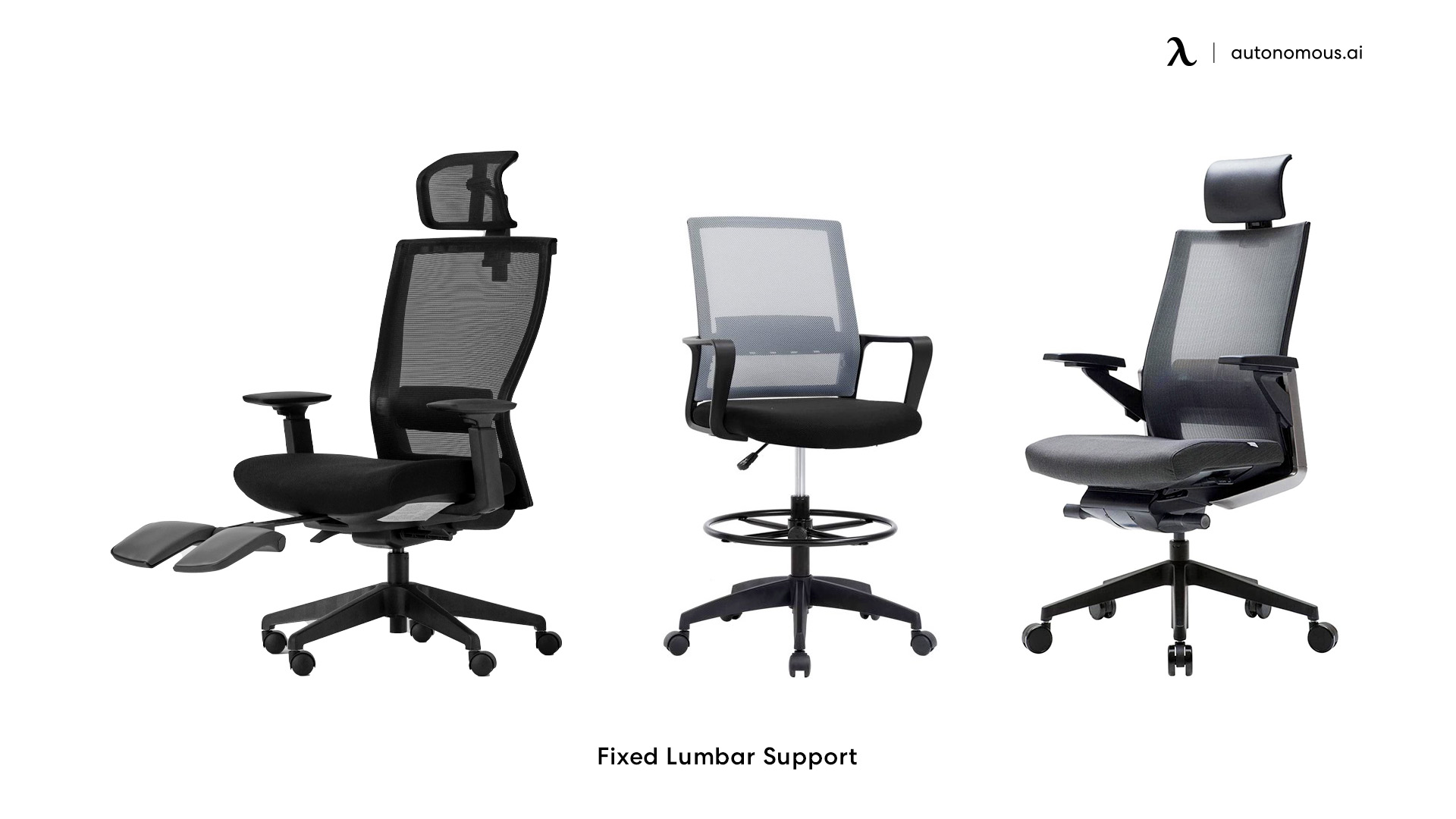
2. Adjustable Lumbar Support
One of the best features you must seek in your office chair is adjustable lumbar support. Why? The comfort of the fit of lumbar support for each individual is different. One can then adjust the settings to get the best comfort. Below are a few things to watch out for in office chair with adjustable lumbar support.
- Height: Check that the lumbar support has a range of a few inches to suit your back.
- Depth: Ensure that the lumbar support has enough depth that it can fill the distance between your usual sitting posture and the seat. Most lumbar supports may not have the depth desired. This requires you to change your position to sit deep into the seat. This requires you to be fully aware of your sitting posture, which most folks forget when under pressure to complete work.
- Firmness: Some lumbar supports come with a tension knob. You can easily adjust the firmness you need from the lumbar support, a useful feature.
3. Dynamic Lumbar Support
Some of the best quality office chairs have dynamic lumbar support position. You may be required to adjust it according to your lumbar region in the first one or two uses. Post that, whenever you lean forward or move, the lumbar adjusts automatically to your body shape. Of course, it restricts the amount of gap it can fill between your body and the chair. With adjustments not necessary every time you move, you can easily focus on your work. Wonderful, isn’t it?
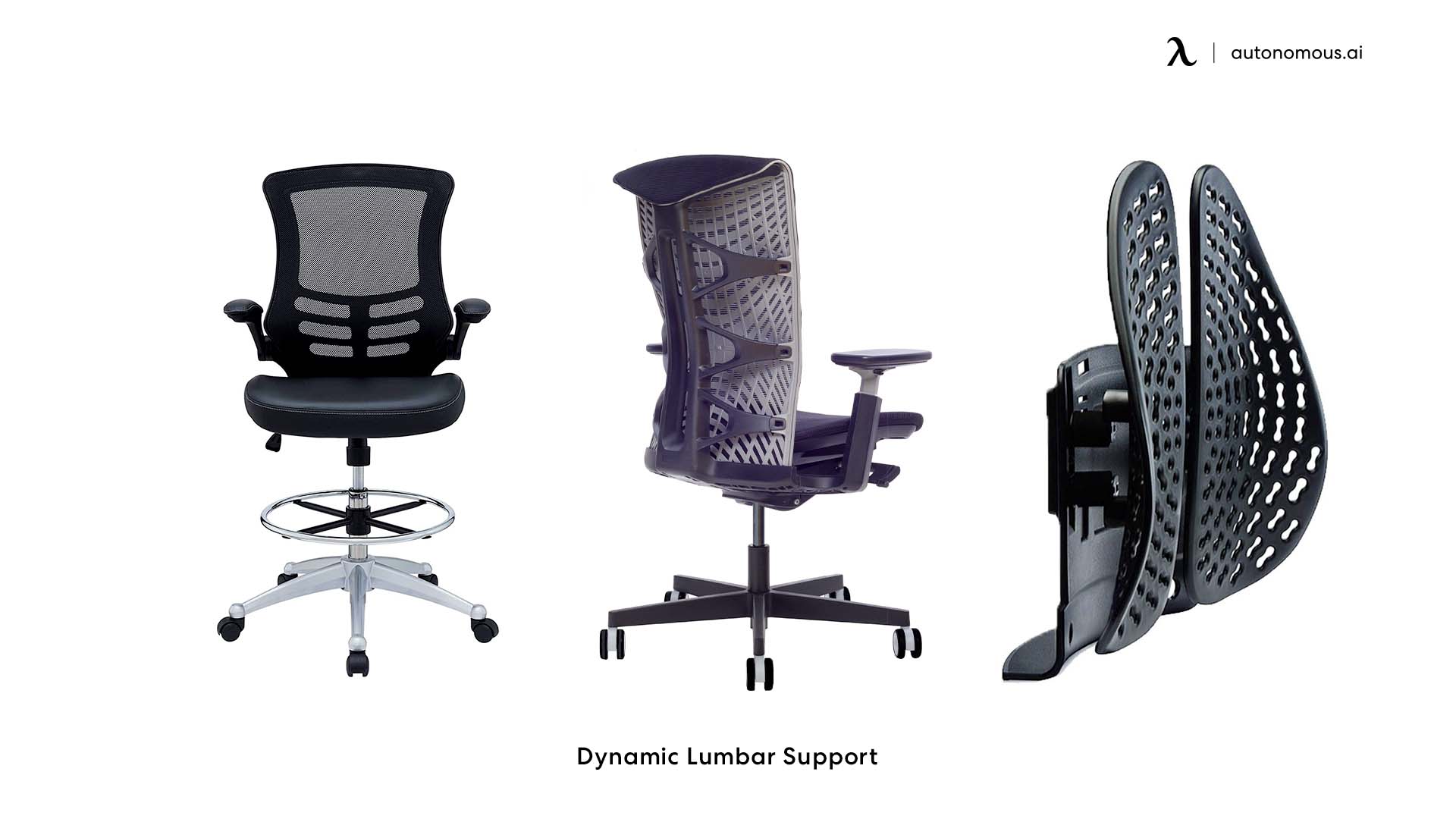
4. External Lumbar Support
External lumbar support can be attached to chairs that have none. Such adaptive lumbar supports for office chair are held in place with straps over the chair's back. One would need to check for the comfort and authenticity of such adaptive external lumbar supports.
FAQs
1. Where Should Your Lumbar Support Be and Rest?
So, what does lumbar support do and where should lumbar support be? It’s one thing to say your lumbar support should support your lumbar spine, but most people don’t have that intimate knowledge of their vertebrae. In practical terms, where should it sit?
A simple way to figure it out is to sit in a chair and feel behind you. Do you feel a gap there? It would be around and slightly above your waist. This is the lumbar area of your spine. It’s also where the lumbar support you get should rest. This is generally built into many office chairs, but some don’t have lumbar support that can be adjusted.
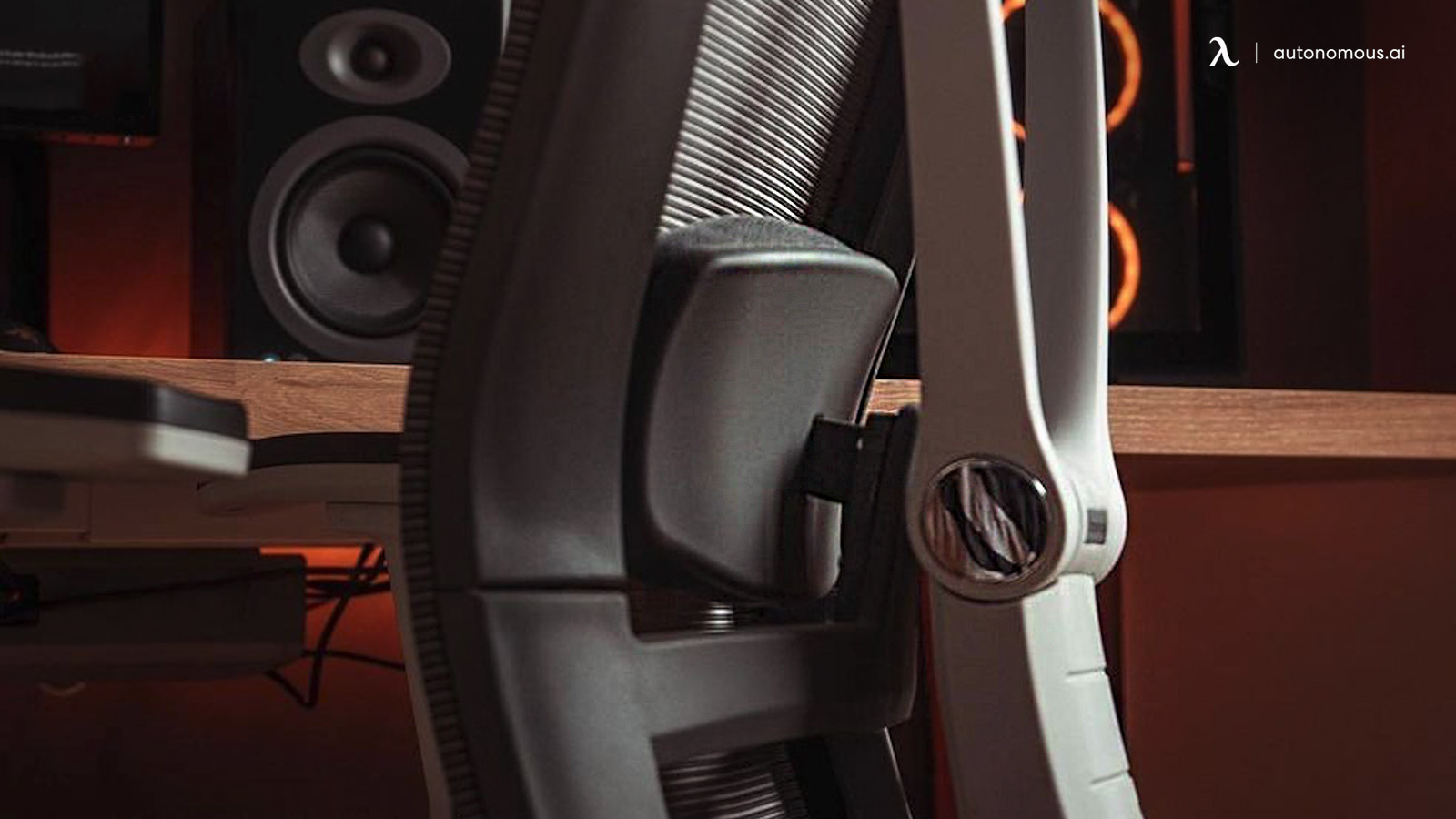
If your lumbar support is just below your shoulder blades, it’s too high up. If it’s between your shoulder blades, it’s much too high up. If it’s even higher than that, up by your cervical spine, it’s a neck rest and not true lumbar support. Either that, or you’re sitting in your chair upside-down, and we’re not entirely sure how you managed that.
If your lumbar support is too low – below your waist, typically – it encourages your upper back to slouch forward. This leads to all manner of biomechanical issues as the stress of your upper body pulls on back muscles, stretching and tensing them in ways that lead to back and neck pain later.
If your lumbar support is too high, it puts pressure on the muscles, nerves, and blood vessels in that area of your back. This can cause an uncomfortable pressure point and can cut off circulation to certain muscles, leading to pain. It can also hurt your lower back, as it can twist without support.
Proper lumbar support position is an important part of sitting in an office chair, particularly if you’re sitting in it for more than two or three hours a day. Even with a consistent transition between sitting and standing throughout the day – which we recommend – a chair with poor lumbar support can lead to back pain and poor posture causing more pain.
2. What Other Adjustments Can You Make?
In addition to having lumbar support on chairs, what other adjustments can you make to your chair? Or, more specifically, what adjustments should you look for in a good chair?
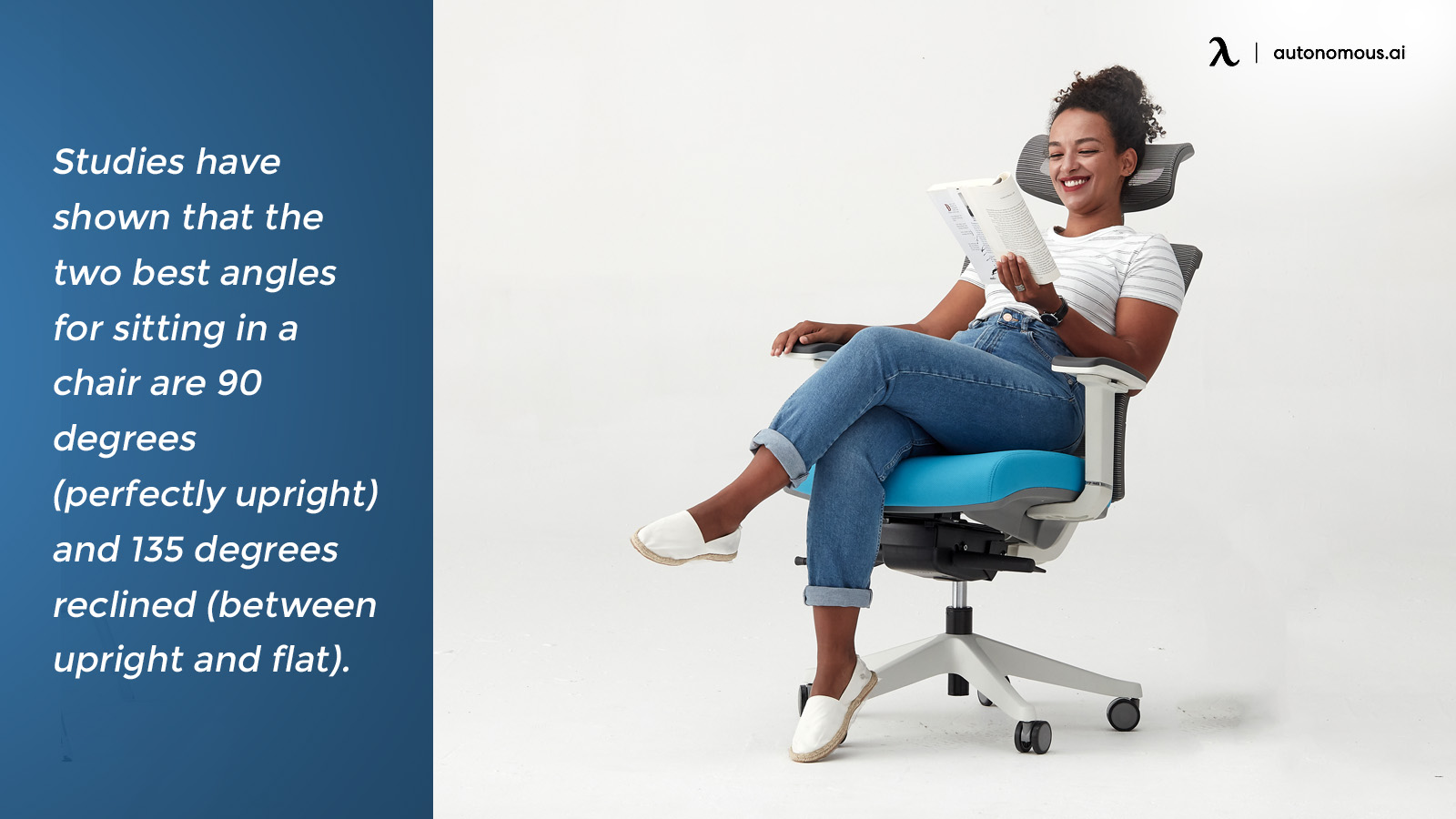
- Sitting angle: studies have shown that the two best angles for sitting in a chair for long periods are 90 degrees – that is, perfectly upright – and 135 degrees reclined, which is 50% of the way between upright and flat. Upright posture gives your spine the best set of angles to work to keep you steady, without putting undue pressure on any one part of your spine or back. A reclined posture allows more of your back muscles to relax and takes the load off of your vertebra. This can help prevent issues in the future with compression, herniated discs, and torsion.
- Lumbar adjustment: in addition to having lumbar support, you should be able to adjust that support. Primarily, you’re looking for two forms of adjustment. The first is up and down. Adjusting your lumbar support vertically allows you to properly position it in the small of your back. Most chairs are built with an “average” person in mind, which may be poorly adjusted for you, particularly if you’re taller or shorter than average.
The other range of adjustment is in and out, or forward and backward, though it is a bit less common. If your spine is curved more or less than normal, you may need a different level of support to make it comfortable. You may also consider talking to a doctor to see if your spinal curvature is fine, or if it’s going to cause issues, and if there are any stretches or forms of physical therapy you can do to help prevent any future problems.
Neck rest: adding neck support to the top of your chair serves a similar purpose to add lumbar support to the bottom of your chair. Neck support gives your neck a place to rest, which helps anchor the rest of your posture and prevent you from slouching.
Ideally, your neck support should be neither too far forward nor too far back, and it should be comfortable to rest your head against while working.

Arm height: the height of your arms when you’re working isn’t as important for spinal health, though a lack of arm support can pull on your shoulders, adding tension to your neck and twisting your back. Armrests help support your arms so your wrists have a better angle to work with when you’re typing and working at a computer. This helps prevent repetitive stress injuries and carpal tunnel syndrome.
Chair height: just about every chair these days has an adjustable height, but some will adjust further up or down than others. Make sure the height of the seat is roughly even with your knees, so you’re able to sit with your feet flat on the floor. This helps minimize instances of spinal torsion and prevents you from cutting off circulation to your lower legs and feet.
Seat tilt: the overall tilt of your seat pan should either be flat or slightly tilted forward as if the chair is trying to spill you out. Again, this helps prevent the front edge of the seat from cutting off circulation in the backs of your thighs.
There are a ton of different chairs on the market, some of which are much better than others. Ideally, you’ll find one with a wide array of adjustment options, which you can use to make the chair suit your unique body shape.
Remember, every person is different, and while there are certainly averages, everyone has their own quirks. You might have longer legs, a shorter torso, wider hips, a deeper curve in your spine, or any number of other minor biological differences. These differences need to be catered to for the best seating posture, especially if you want to avoid long-term health issues that come with poor posture.
3. Lumbar Support or a Lumbar Pillow?
Another question we see frequently is whether you should go for a chair that has lumbar support built into it, or a lumbar pillow. There are pros and cons of lumbar support and lumbar pillow.
A chair with built-in lumbar support is good for dialing in a specific setting and knowing it works with your body. If you’re able to use the same chair day after day (as opposed to sharing chairs with other people or needing to grab whatever chair is available), this option works best. It’s typically firmer and more resistant to crushing over time.
On the other hand, built-in lumbar support may not be adjustable, or it might not adjust far enough to suit your needs. It can also be difficult to replace compared to a simple pillow if it is damaged over time or through age.
A stand-alone lumbar support pillow has a couple of benefits. It’s portable, meaning you can carry it with you and use it in your car, in your chairs at home, and anywhere you need to sit and have lumbar support for more than a few minutes at a time. Pillows come in a wide variety of shapes, sizes, levels of firmness, and even styles and decorations.
Unfortunately, this means they can be lost or damaged easily. They’re more difficult to position properly and may not work in certain kinds of chairs. A pillow can also get in the way of certain kinds of adjustments to a standard chair, including tilt and seat angle adjustments, which the pillow can get caught in. Pillows can also fall off or move when you get up or shift, meaning you end up needing to adjust them constantly throughout the day. This can lead to a lot of minor distractions and the corresponding loss of productivity.
Tips for Proper Lower Back Support
Lower back support is perhaps the most important adjustment you can make to a chair to prevent pain. Without proper support, the pain and injury cascades. You start with lower back pain. You adjust your posture to alleviate that pain, which leads to twisting and torsion on the spine, slouching, and imbalances. This puts a strain on more back muscles, and tension and pain in your upper back and neck. It can also lead to compression or tension on your vertebrae, which can cause herniated or slipped discs. All of this tension compounds into neck pain leading to headaches, shoulder pain leading to sore arms, and poor posture that causes wrist injuries.
The body is complex and interconnected, so one element being thrown off balance for long enough can cause damage to nearly all of the rest of it.
So how can you help avoid these issues? In addition to having lumbar support, you may also want to take a few other actions.
- A modest diet and exercise plan. Studies have shown that even a simple weight loss of ten pounds can help reduce lower back pain significantly. The more overweight you are, the more you’ll want to lose to avoid these spine issues. It doesn’t necessarily matter how you lose it, either; diet and exercise will both work if they are executed properly.
- Exercise your core. Working out to strengthen your back, sides, and abdominal muscles goes a long way towards helping you alleviate back pain. When your muscles are stronger, your posture is better and easier to maintain, and less reliant on your skeleton and tendons to do the holding. Stretches and simple bodyweight exercises like twists, planks, and crunches can all help build core strength.
- Use proper body mechanics. Sitting is just one part of the equation. You can still injure yourself in your day-to-day life, particularly if you lift heavy objects with your back, sleep in a poor position, or wrench back muscles with undue effort.
- Quit smoking. While it might not seem related, nicotine actually causes degeneration in the spinal column. It reduces blood flow, which prevents the spine from keeping itself healthy, and can cause or accelerate degenerative changes.
All in all, the best thing you can do is start sitting in a proper posture whenever you’re sitting throughout the day. If at all possible, consider changing between sitting and standing regularly, and while sitting, make sure you have properly adjusted lumbar support.
Periodically review your chair and your adjustments to make sure that you’re still maintaining proper posture throughout the day.
Wrap-up
You can easily avoid back aches and pains with some exercises and the proper sitting postures. To avoid any symptoms of lower back pain, it's best to use lumbar support. If it has heat therapy and can be carried, you will find it more helpful. No more pains and aches! Isn't that what you want?
Restez connecté avec nous !
Abonnez-vous à nos mises à jour hebdomadaires pour rester au courant de nos dernières innovations et de l'actualité de la communauté !
Intéressé par un placement de lien ?
.svg)

/https://cdn.autonomous.ai/production/ecm/240112/gallery10(1).jpg)


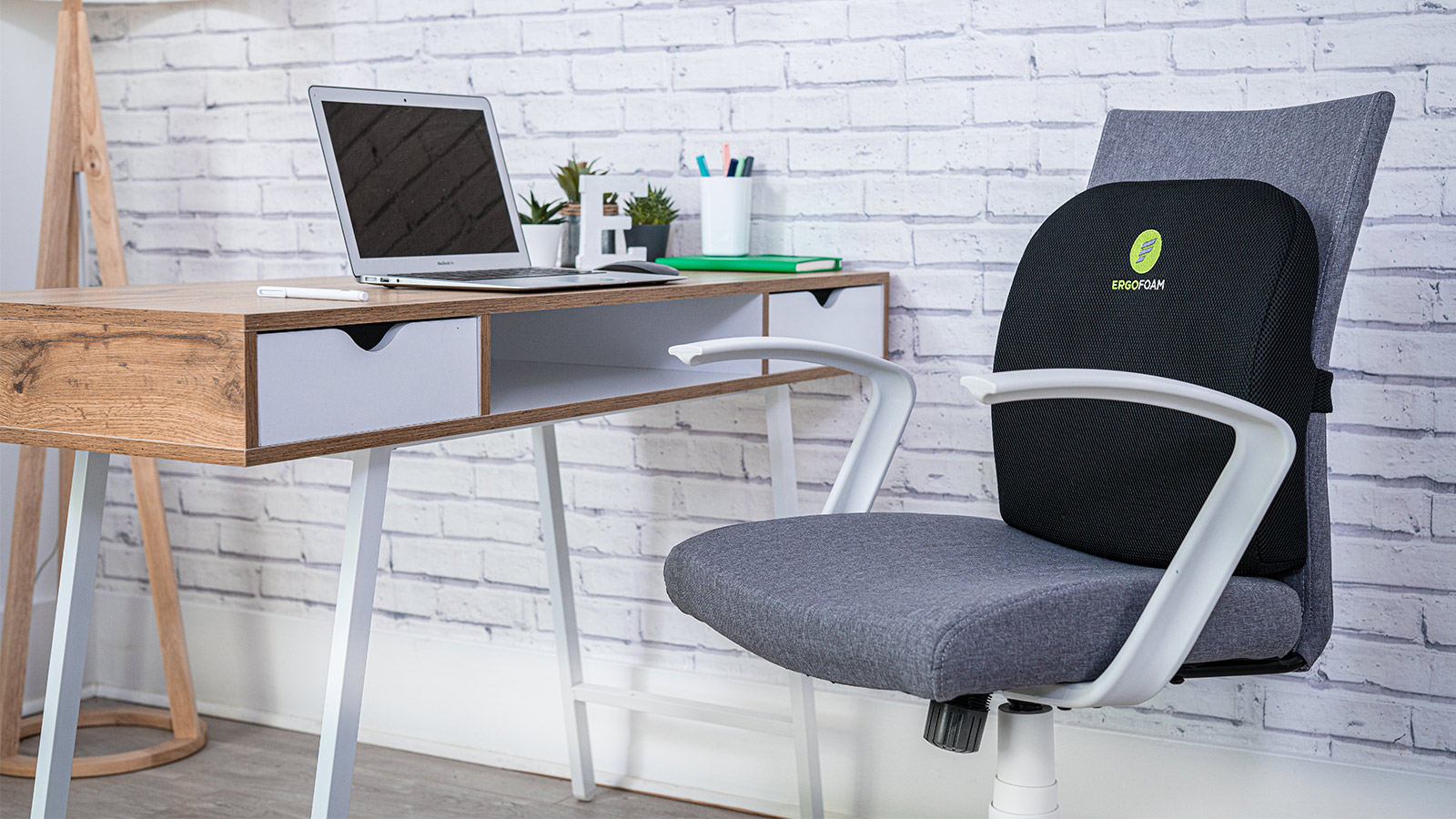



/https://storage.googleapis.com/s3-autonomous-upgrade-3/production/ecm/230914/bulk-order-sep-2023-720x1200-CTA-min.jpg)

/https://storage.googleapis.com/s3-autonomous-upgrade-3/production/ecm/230824/Amanda-8035f52a-7230-4c31-9bda-626fd7c392bf.jpg)